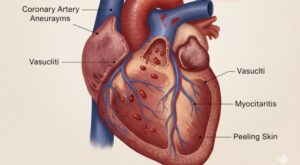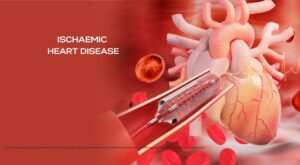Iron Deficiency & Anemia in Indian Women: A Silent Epidemic

Understanding the Root Causes, Recognising the Signs, and Rebuilding Strength through Nutrition and Awareness
Introduction: The Hidden Weakness That’s Everywher
Fatigue, breathlessness, dizziness—many women in India chalk these symptoms up to stress, household workload, or aging. But in reality, millions are suffering from iron deficiency and anemia, often undiagnosed and untreated. It’s so common, so widespread, that it’s referred to as a “silent epidemic.”
According to the National Family Health Survey (NFHS-5), more than 57% of Indian women aged 15–49 are anemic, with rural women and adolescent girls at even higher risk. And yet, the awareness around this issue remains shockingly low.
What Is Iron Deficiency and Anemia?
Iron Deficiency
Iron is a key mineral required for hemoglobin production, which helps red blood cells carry oxygen throughout the body. When your body doesn’t get or absorb enough iron, it leads to iron deficiency.
Anemia
Anemia is a broader condition in which your body lacks enough healthy red blood cells or hemoglobin. While there are many types, iron deficiency anemia (IDA) is the most common, especially in India.
In simpler terms: Low iron = less hemoglobin = less oxygen = constant tiredness and reduced organ function.
What Causes Iron Deficiency in Indian Women?
1. Poor Dietary Intake
- Vegetarian diets (common in India) often lack heme iron, which is more easily absorbed than plant-based (non-heme) iron.
- Low intake of iron-rich foods like meat, leafy greens, and legumes.
2. Menstrual Blood Loss
- Monthly blood loss leads to steady depletion of iron stores, especially in women with heavy or prolonged periods (menorrhagia).
3. Pregnancy & Lactation
- Iron demands skyrocket during pregnancy (to support fetal growth and increased blood volume).
- Many women start pregnancy with depleted iron stores and don’t receive adequate supplementation.
4. Frequent Pregnancies
- Closely spaced pregnancies prevent the body from restoring iron levels between births.
5. Poor Absorption
- Conditions like celiac disease, chronic diarrhea, or parasitic infections (hookworm) interfere with nutrient absorption.
6. Cultural and Socioeconomic Factors
- Lack of access to diverse foods.
- Gender bias: women often eat last and least in many households.
- Poor awareness of iron’s importance.
Signs and Symptoms of Iron Deficiency Anemia
Anemia develops gradually and often goes unnoticed until it becomes severe. Common symptoms include:
- Chronic fatigue or weakness
- Pale skin, especially in the face and palms
- Dizziness or lightheadedness
- Cold hands and feet
- Shortness of breath, even with mild exertion
- Headaches
- Rapid heartbeat or palpitations
- Brittle nails and hair loss
- Difficulty concentrating (“brain fog”)
- Restless legs syndrome
Women often normalize these symptoms, attributing them to daily stress—but they are clear red flags of a deeper nutritional deficiency.
Why Anemia is a Public Health Emergency in India
- High maternal mortality: Anemic mothers are more likely to suffer complications during childbirth.
- Poor cognitive development in children born to anemic mothers.
- Reduced workplace productivity: Anemia causes up to a 20% drop in work capacity—impacting national economic growth.
- Weakened immunity, making women more prone to infections.
Reversing the Deficiency: What You Can Do
1. Iron-Rich Foods to Include
| Food Item | Iron Type | Absorption Level |
|---|---|---|
| Red meat (mutton, liver) | Heme | High |
| Fish & poultry | Heme | High |
| Spinach, amaranth | Non-heme | Moderate |
| Lentils, chickpeas | Non-heme | Moderate |
| Ragi (finger millet) | Non-heme | Moderate |
| Jaggery | Non-heme | Low |
| Sesame seeds | Non-heme | Moderate |
| Fortified cereals | Added iron | High |
2. Enhance Iron Absorption Naturally
- Pair non-heme iron sources with Vitamin C-rich foods (e.g., lemon, oranges, amla, tomatoes).
- Avoid drinking tea/coffee with meals—it hinders iron absorption.
- Cooking in cast iron cookware can increase the iron content of food.
3. Iron Supplements and Fortification
- Ferrous sulfate or ferrous fumarate are commonly prescribed supplements.
- During pregnancy, the Indian government recommends 100mg of elemental iron + 500mcg folic acid daily.
- Government schemes like Anemia Mukt Bharat and POSHAN Abhiyaan distribute IFA tablets and fortified food products.
Always take iron supplements under medical supervision—they may cause constipation or nausea if taken incorrectly.
Lifestyle Interventions
- Spacing pregnancies through contraception helps replenish iron stores.
- Deworming (especially in rural areas) reduces parasite-induced blood loss.
- Routine screening for hemoglobin levels, especially in adolescence and pre-pregnancy stages.
- Address menstrual disorders early—heavy periods may require treatment to prevent chronic anemia.
When to See a Doctor
Seek medical advice if you:
- Feel unusually tired or breathless
- Have heavy or irregular periods
- Are planning pregnancy or already pregnant
- Have a history of anemia in your family
A simple blood test (CBC, serum ferritin) can determine your iron status.
From Fatigue to Flourishing
Iron deficiency is not just a medical issue—it is a gender justice issue, a nutritional issue, and a social issue. Empowering Indian women with education, access to iron-rich foods, and routine health checks is essential to breaking the cycle of silent suffering.
At nellikka.life, we believe that awareness is the first step toward wellness. Let’s normalize conversations around nutrition, menstrual health, and women’s fatigue—and redefine strength not just as endurance, but as nourishment and balance.
References
- National Family Health Survey-5 (NFHS-5), Ministry of Health and Family Welfare, India
- World Health Organization: Iron Deficiency and Anemia Guidelines
- Indian Council of Medical Research (ICMR), Nutrient Requirements and Dietary Guidelines
- Anemia Mukt Bharat – Government of India Initiative
- Indian Journal of Hematology & Blood Transfusion, 2021




